Summer Intensive: The Turbulent Mind of Leonardo da Vinci
A short course celebrating the life and work of Renaissance polymath, Leonardo da Vinci.
2019 marked 500 years since the death of Leonardo da Vinci, the Renaissance polymath who looms large as one of the great creative intellects of all time. With talents spanning painting, architecture, mathematics, engineering, anatomy and astronomy, to name only a few, the stunning breadth of Leonardo’s achievements makes him the quintessential ‘Renaissance man’. This Faculty of Arts Short Course demystifies Leonardo’s legacy – both material and intellectual – through an immersive exploration of his works and ideas over four evenings.
Reflecting Leonardo’s polymathy, this course draws on academic expertise from the fields of Art History, Engineering, History, and Italian Studies to offer insight into his turbulent mind.
This course has been developed as part of the Turbulence Project, an interdisciplinary research project developed by a team of researchers from across the fields of Humanities and Engineering at the University of Melbourne and the University of Western Australia.
Program
Session 1 – Monday, 20 January – Leonardo’s life and letters
Leonardo spent more time writing than drawing or painting. He wrote notes, letters, treatises, poetry, fables, and prophecies. His strong passion for writing has been described by theorists as a paradox. In our first session, Assoc. Professor Andrea Rizzi will explore this paradox as a crossroads between the humanities and sciences. This session outlines the early years of Leonardo’s life, with a focus on his time in the Court of Milan, and his written reflections on life, art, and science.
Session 2 – Tuesday, 21 January – Leonardo’s battlefield
Leonardo’s life was shaped by turbulent times. The Italian Wars brought both hardship and opportunity, and his conflicted reactions to the notions that drive war – liberty, defence, utility, horror – unfold in his notebooks. In our second session, Dr Elizabeth Reid will cover Leonardo’s responses to the initiatives and problems of late 15th to early 16th Century warfare, and Professor Joy Damousi will reflect on the continuing resonances of these challenges and the legacy of Da Vinci’s war machines.
Session 3 – Wednesday, 22 January – Leonardo’s engineered world
An obsessive observer, Leonardo documented natural phenomena and conducted experiments in order to improve his art, and to design machines relevant to his day. In this session, Dr Elizabeth Reid will contextualise Leonardo within the dominant observational methodologies of his age, demonstrating the interconnectedness of ideas that we today tend to classify as distinct disciplines, and tracing the emergence of the scientific method. Professor Ivan Marusic will then take us through some of Leonardo’s forays into what we would now describe as mechanical engineering and reflect on the intellectual processes at work behind them, with a focus on fluid flow and turbulence.
Session 4 – Thursday, 23 January – Leonardo’s masterpieces
Despite having completed a relatively small number of projects, Da Vinci’s innovations in the theory and practice of painting and drawing radically transformed the visual arts in his own time and beyond. In this session, Dr Lisa Mansfield will explore Leonardo’s universal curiosity, and his ability to merge technical virtuosity with visionary creativity and intellectual rigour, embodying a model of lifelong learning that spanned his early career as a young artist in Florence to his final years as a polymathic genius working for the king of France.
Presenters
 | Professor Joy Damousi is an ARC Kathleen Fitzpatrick Laureate Fellow and Professor of History in the School of Historical and Philosophical Studies at the University of Melbourne’s Faculty of Arts. She is the current President of both the Australian Academy of the Humanities and the Australian Historical Association. Joy is author of numerous books on the histories of war and violence in Australia and the world, and co-editor of the four-volume Cambridge World History of Violence. |
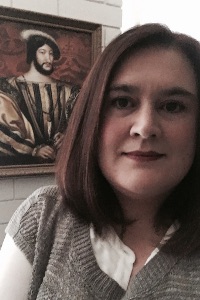
| Dr Lisa Mansfield is head of Art History in the University of Adelaide’s School of Humanities and a Chief Investigator on the ARC Discovery Project ‘The Italian Wars, 1494-1559’. Specialising in the art and material culture of Northern Europe (1400-1600), her primary areas of research include Renaissance portraiture and images of warfare and representations of gender and violence in early modern Europe. Lisa is an alumna of the University of Melbourne, having completed her PhD with the Faculty of Arts in 2005. |
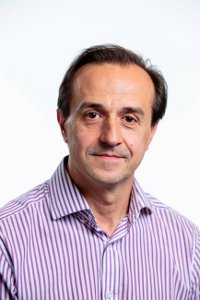
| Professor Ivan Marusic is an ARC Laureate Fellow and a Redmond Barry Distinguished Professor in the Department of Mechanical Engineering at the University of Melbourne. He is also Deputy Dean, Research in the Melbourne School of Engineering. His research is primarily in experimental and theoretical studies of turbulence, and he is an Associate Editor of the Journal of Fluid Mechanics and the Journal of Hydraulic Research. |
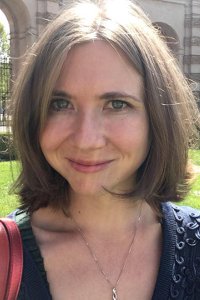
| Dr Elizabeth Reid is an honorary research fellow at the University of Western Australia, and a research assistant at the Sydney Conservatorium of Music and Curtin University. In 2018 she examined the role of gender in ceremonial entries for the ARC project ‘The Italian Wars 1494-1559’ for which she has an article forthcoming with Sixteenth Century Journal. She has taught history and social science at the universities of Western Australia, Western Sydney, and Macquarie. |
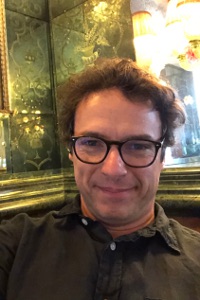 | Associate Professor Andrea Rizzi is a Cassamarca Associate Professor of Italian at the University of Melbourne. A former Australian Research Council Future Fellow (2014-2018), Harvard I Tatti Center Fellow (2010-2011), and Associate Investigator for the Australian Centre of Excellence for the Study of the History of Emotions (2015-2018), he has published on vernacular translators in early Renaissance Italy, courtly culture in Ferrara and Mantua, and the history of trust and communication. |
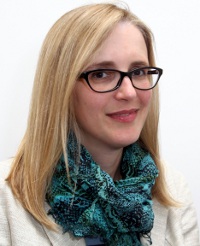 | Host: Dr Jenny Spinks joined the University of Melbourne in 2017 as Hansen Senior Lecturer in History. She teaches and researches the history of early modern Europe, with a particular focus on Germany, France, and the Low Countries. Her teaching often utilises material culture and visual images, and she has a special interest in connecting students to historical resources in the community. Jenny currently researches early modern polemical print culture, religious conflicts, disasters and wonders, and the history of emotions. |
Images
Banner image
Leonardo da Vinci, Superficial anatomy of the shoulder and neck, recto, c. 1510, Royal Collections, RCIN 919003, Google Art Project. Wikimedia Commons.